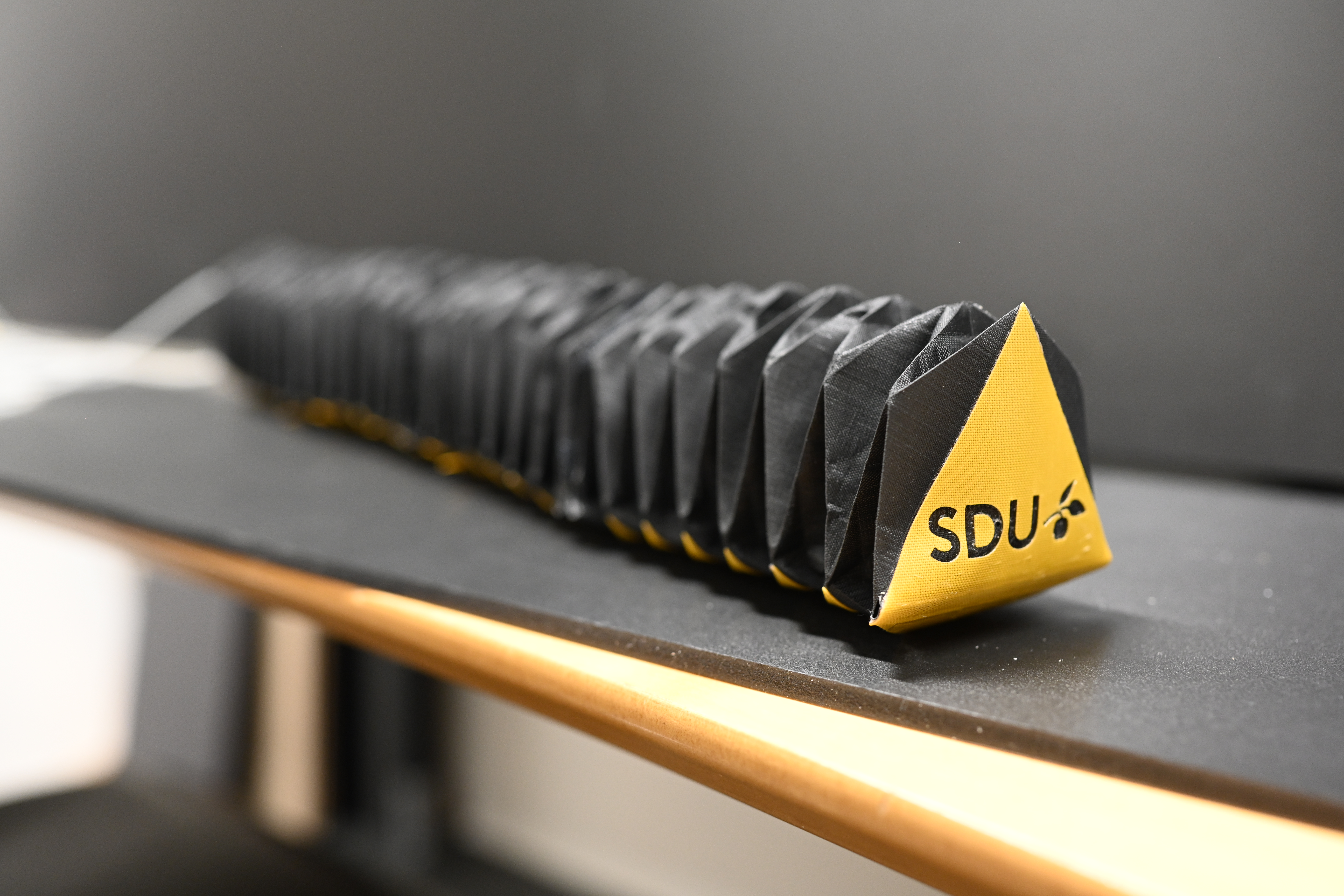
Snake robot could save lives
Researchers at the University of Southern Denmark are working on a snake robot that can move on uneven terrain and crawl through tiny passages. In the future, the robot could, for example, be used for search and rescue operations after earthquakes.
A search and rescue operation after an earthquake is a complicated task. One thing is to retrieve the potential survivors safely from the rubble. Even more difficult is finding out where they are.
It is precisely this kind of work that, among other things, a snake robot equipped with sensors and cameras could help solve. Such one is currently being developed by researchers at the Faculty of Engineering at the University of Southern Denmark.
They have recently published an article about the project in the journal Device.
- We have made a robot capable of rectilinear locomotion - that is, movement in a straight line - as observed in snakes, says PhD student Burcu Seyidoğlu.
- Future applications include search and rescue operations, field inspection, and space exploration. Especially in scenarios requiring navigation through confined spaces where body flexion is not feasible.
Pushes itself forward
Burcu Seyidoğlu is part of SDU Biorobotics and has spent the last three years with her supervisor, Professor Ahmad Rafsanjani, closely studying the movements of snakes and figuring out how to mimic them in a robot.
- Most people might associate snakes with an S-shaped movement, but snakes can move in many different ways. It is usually said that they have four overall ways of moving. Rectilinear locomotion is the type of locomotion snakes use when navigating through narrow spaces, explains the researcher.
Like real snakes, the snake robot has scales on the underside that can push the body forward.
It is a so-called soft robot, which is a new kind of robot made of – as the name indicates – soft materials. The snake robot is made of an engineered composite textile which is laser-cut into specific patterns, folded according to Japanese origami principles, and heat-pressed to resemble a bellow.
Burcu Seyidoğlu, who is trained as a mechanical engineer, has therefore also had to practice a lot in cutting and pasting, she says.
- I have seen a lot of YouTube videos about origami!
Instead of a motor, the robot has a series of air pockets on the inside, which are inflated with an electric pump and make the snake move. In the current prototype, the pump is outside the snake, but the researchers are working on a new version where all the hardware sits inside the snake's body.
The robot is also built of smaller modules, so the snake can easily be made longer or shorter.
Advantages of softness
There are many advantages to making the snake robot out of soft materials rather than hard ones like, for example, plastic or metal, says Burcu Seyidoğlu.
- The materials in our robot are light and much cheaper than the rigid materials, she says.
- There are others who are developing snake robots, but typically, they are quite expensive to build. And that makes it difficult to send them on missions where you do not know if you will them it back again.
It is also an advantage that the materials themselves are flexible and can yield when the robot has to slither its way through the terrain, says the researcher.
One might think that a fabric robot is fragile and will have a hard time handling, for example, moisture, water, high heat, or fire. But all of the materials are specifically designed for outdoor applications and demanding enviroments, says Burcu Seyidoğlu. The composite textile used is made from the world's strongest synthetic fibre and is also used for bulletproof vests and as a replacement for steel wires on ships.
- The material is specifically designed for outdoor applications and demanding environments, And we designed the air pockets in the robot to be slightly air-permeable so that the air is not trapped inside and can cause delamination, says Burcu Seyidoğlu.
Still basic research
However, the researcher emphasises that the snake robot is still at a basic research level. It moves forward slowly, and so far, it cannot change direction.
Exactly how many years will go by before there is a commercial robot ready for the market, Burcu Seyidoğlu prefers not to speculate. But it will not be in the near future, she says.
- Future steps will besensorizingour robot and elevating its autonomy. Also, for real-world applications, we need to develop an untethered version of the robot with a high level of system integration covering actuation, sensing, control, and power supply without compromising compliance. Having this level of system integration while still being compliant is a big challenge.
The whole field around soft animal-inspired robots is also still new. Right now, researchers worldwide are working to understand the movements of animals and to come up with suggestions on how to mimic them in robots.
With the modular snake robot of origami-folded textiles, the researchers at SDU have taken the first steps – or should we say the first pushes? – and presented one possible solution to the rectilinear movement of snakes.
This work was supported by the Villum Foundation through the Villum Young Investigator grant 37499.